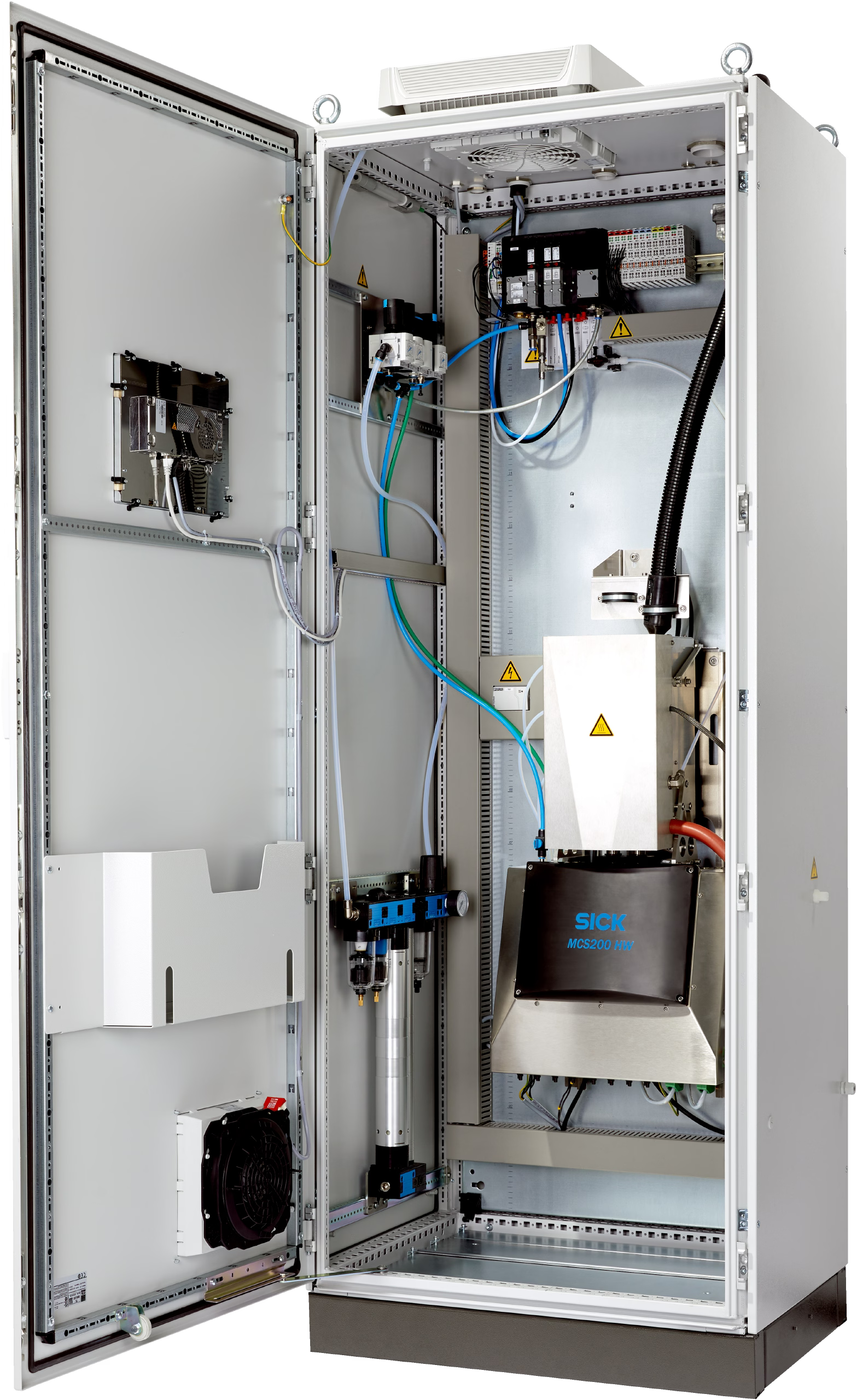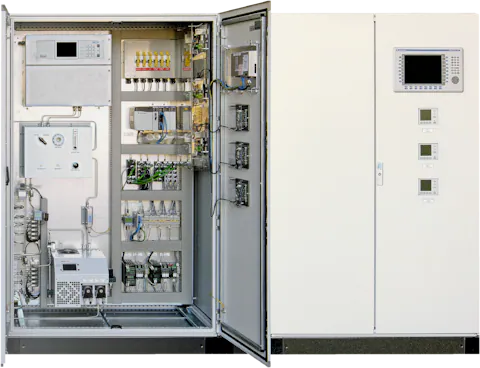Flue Gas Analysers
Flue gas analysis plays a pivotal role in optimizing combustion processes, reducing emissions, and adhering to environmental regulations. By measuring the concentration of various gases in flue emissions, industries can achieve efficient fuel usage, minimize pollutant release, and ensure compliance with environmental standards.
Macrotec and SICK offer a comprehensive range of gas analysers, incorporating various reliable measurement methods. They provide both in-situ and extractive measurement options, ensuring that entire facilities are equipped with adaptable solutions for numerous systems and complex measurement requirements.
To effectively minimize emissions and improve production quality and efficiency, precise analysis and monitoring of gas concentrations are essential. SICK utilizes advanced technologies and proven measurement principles to offer innovative solutions. These solutions are effective in measuring harsh or hazardous gases and are safe for use in areas at risk of explosions. Moreover, digital services like the Monitoring Box not only monitor conditions but also provide analytical insights into condition and application data, presenting a holistic solution for gas analysis and monitoring.

What is a Flue Gas Analyser?
A flue gas analyser, also called an emissions analyser, or a stack analyser, is a specialized instrument used to measure the composition and concentration of gases emitted from combustion equipment such as boilers, furnaces, and other industrial processes. The primary purpose is to assess the efficiency of the combustion process and to monitor and reduce emissions of harmful pollutants. Flue gas analysers play a crucial role in optimizing combustion for energy efficiency, and environmental compliance.
Key functions of a flue gas analyser are:

Emissions Monitoring & Compliance

Safety Checks

Combustion Efficiency Analysis
Flue gas analysers are essential tools in industries that involve combustion processes, such as power generation, manufacturing, crematoriums, heating and cooling, and waste incineration. By ensuring optimal combustion efficiency and minimizing pollutant emissions, these analysers contribute to energy conservation and environmental protection. Flue gas analysers, together with dust and flow measuring devices, form Continuous Emission Monitoring Devices.
Industry Applications
Incineration
Depending on the specific type of incineration facility, such as those for household waste, industrial waste, or hazardous waste, different requirements are in place. It is essential to continuously monitor pollutants including HCl (hydrogen chloride), HF (hydrogen fluoride), NOx (nitrogen oxides), SO2 (sulphur dioxide), VOC (volatile organic compounds), and particulate matter, along with O2 (oxygen) and/or H2O (water vapor) levels, in compliance with local environmental regulations. Additionally, there is a growing need to detect total mercury (Hg).
Power Plants
Power plants are subject to a range of requirements that vary based on the type of fuel they utilize, such as coal, oil, or gas. Continuous measurement of certain pollutants is mandated, contingent on the specific environmental regulations in place locally. These pollutants include CO (carbon monoxide), NOx (nitrogen oxides), SO2 (sulphur dioxide), and particulate matter (dust). Additionally, reference parameters like temperature and O2 (oxygen) levels, and in some cases H2O (water vapor), must also be consistently monitored.
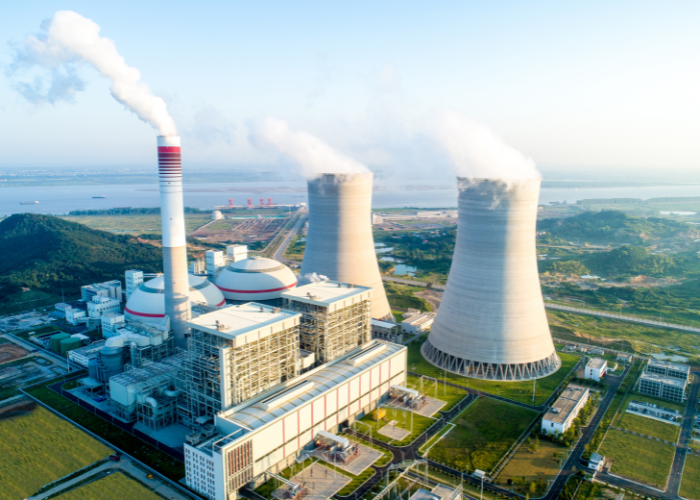
Cement Production
In cement production facilities, as well as in lime firing and crushing operations, continuous monitoring of flue gas pollutants is required in accordance with local environmental regulations. This typically includes measuring NOx (nitrogen oxides), SO2 (sulphur dioxide), and particulate matter, along with reference parameters like O2 (oxygen) and/or H2O (water vapor). Additionally, when alternative fuels are used, it becomes necessary to measure extra components such as HCl (hydrogen chloride), HF (hydrogen fluoride), Hg (mercury), and VOC (volatile organic compounds).
Chemicals, Oil, and Gas
Chemical manufacturing facilities typically feature a power plant that operates on fossil fuels, generating both electricity and steam. The gases produced in this process are utilized for thermal purposes and require appropriate monitoring. Additionally, certain sections of the plant may be designated as explosion-proof areas due to the nature of the materials and processes involved, which might require additional monitoring or specialised analysers.
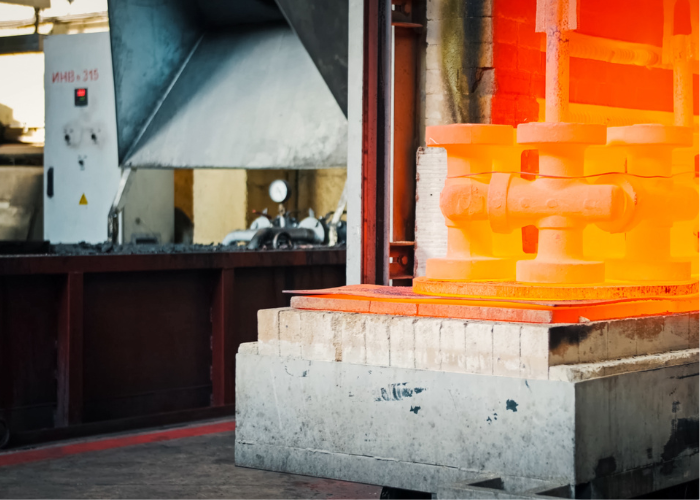
Metals and Steel Production
Facilities involved in calcination, melting, or sintering ores, as well as those engaged in producing non-ferrous metals, operate under extreme environmental conditions, including high levels of dust and significant vibration. The gases generated in these processes are reprocessed, necessitating precise measurement and monitoring to ensure compliance with relevant standards and operational efficiency.
Pulp and Paper
During the kraft pulp production process, TRS (Total Reduced Sulphur) emissions are predominantly generated in lime kilns and during alkali combustion process. These emissions are subject to stringent regulation because they can cause intense odour pollution. Consequently, it is essential to continuously measure the concentrations of hydrogen sulphide, methyl mercaptan, dimethyl sulphide, and dimethyl disulfide, or alternatively, the collective TRS parameter, to ensure compliance with environmental standards.
Greenhouse Gasses
The greenhouse gas CO2 accounts for 75% of global climate change, but it’s important to note that CO2, CH4 (methane), and N2O (nitrous oxide) each have different levels of impact on the environment. In response, legislators around the world are mandating that operators report their greenhouse gas emissions. For instance, in the USA and Canada, this requirement is part of the EPA’s Greenhouse Gas Reporting Program. In the European Union, it falls under the Emissions Trading Directive. To ensure greater accuracy than what is achievable through bulk cargo calculations, a precise measurement of the volumetric flow of these gases is essential.
Glass and Ceramics
In systems used for manufacturing glass and glass fibres, as well as for melting ceramic materials and firing ceramic products, there are specific challenges to address. These include the presence of fine silicates and borates in the flue gases, which have a high potential for abrasion. These elements are typical requirements that need careful management in these manufacturing processes.

Crematoriums
Many countries and are starting to require the monitoring of flue gasses from crematoriums. The typical requirements are usually CO (carbon monoxide), NOx (nitrogen oxides), and dust, along with reference parameters like O2 (oxygen) and/or H2O (water vapor). Additionally, there is a growing need to detect total mercury (Hg).
Other Industries
- Systems for biological processing of waste
- Surface treatment with organic substances
- Mining
In-Situ Gas Analysers
Innovative in-situ measurement technology is designed for direct integration into devices at the specific measurement location. These analysers perform measurements in-situ, right at the site of interest, under the actual conditions of the system. Offered as a complete device solution, they are primarily distinguished by their low maintenance needs and exceptionally rapid response times. SICK offers these in-situ analysers in two variants:

Cross-Duct Systems
Utilizing measurement paths that cross the entire duct, these systems provide a representative measurement result across the entire duct diameter. They are well-suited for large ducts where gas composition may vary across the cross-section.
Measuring Probes
Optimized for single-sided installation, this design simplifies integration into a diverse range of system conditions. It is particularly suitable for environments with wet gases, or very high concentrations of test gases and dust loads.
Advantages of In-Situ Analysers:
- Direct and continuous measurement without the need for sampling.
- Less complex installation.
- Direct and Unfalsified Measurement- Gas analysers installed in-situ are directly attached to the gas-conducting duct/stack. They feature a measurement path within the duct, ensuring that measurements occur directly in the gas stream. This setup prevents any alteration or distortion of the gas composition that could arise from lengthy transport paths or gas conditioning. Additionally, the gas matrix remains stable against temperature fluctuations, and there’s no risk of soluble components being leached out due to the formation of condensates.
- Extremely Fast Measurement – In-situ gas analysers perform measurements directly within the gas-conducting duct, resulting in notably swift analysis. This approach removes the time lags associated with transporting the gas to an analyser and using a gas conditioner, as seen in extractive methods. Consequently, the measurement results, which are unaltered, are obtained very quickly. This enables in-situ gas analysers to effectively detect rapid changes in the process.
- Lower maintenance and OPEX – In-situ gas analysers require minimal maintenance as they operate directly within the gas-conducting duct. This design avoids issues like condensate formation or blockages that can occur in sample gas lines, sample gas pumps, or gas conditioners. Consequently, there’s no need for routine tasks such as emptying condensate containers or cleaning and replacing sampling filters.
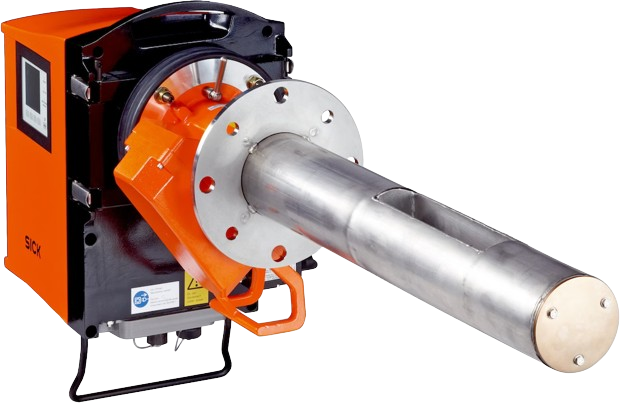
SICK™ GM32
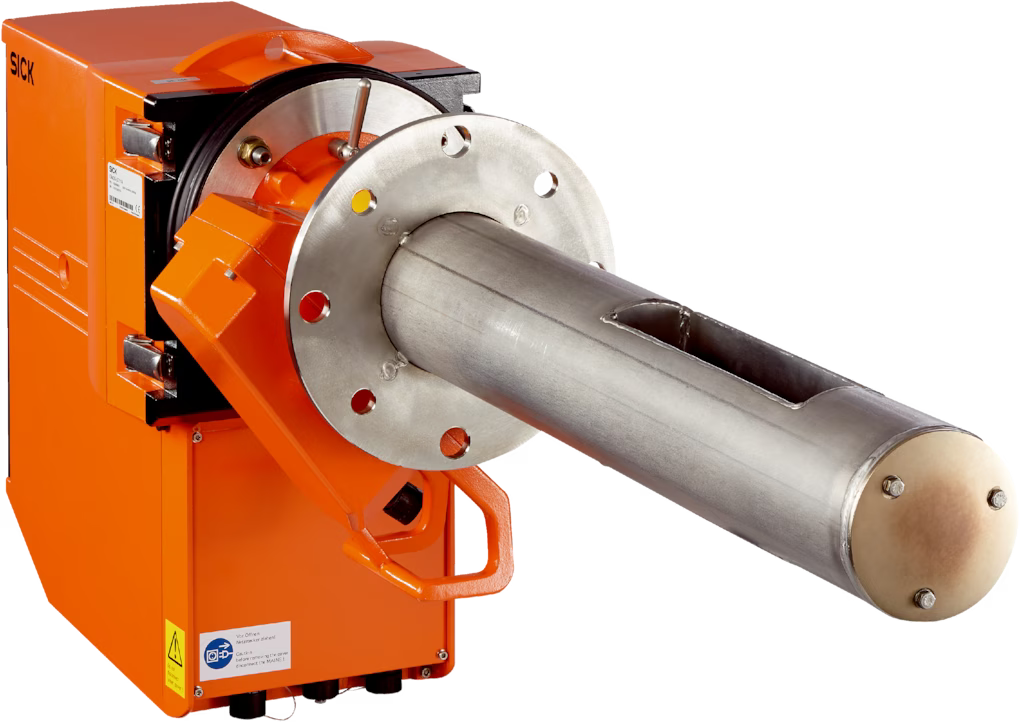
SICK™ GM35
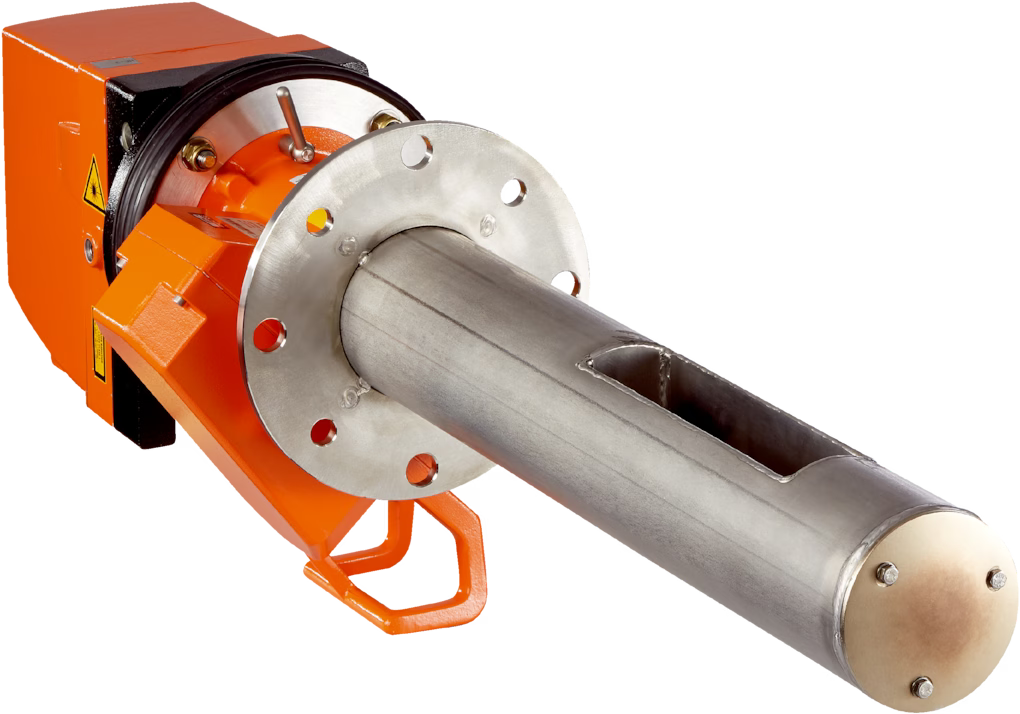
SICK™ GM700
Extractive Gas Analysers
SICK’s extractive gas analysers are versatile and can be utilized for a wide range of applications. The process involves removing a partial gas flow from the gas-conducting duct through selected measuring probes, conditioning it, and then supplying it into the analyser module under constant conditions. The entire gas treatment process, from sampling and conditioning to analysis, is designed to the specific measurement task. This flexibility allows for the measurement of aggressive, flammable, or poisonous gases, even under challenging process conditions such as high temperatures, pressures, or dust loads.

Hot/Wet extractive measurement
All components that come into contact with the test gas are heated and kept above the dew point. The analysis is done under constantly hot measurement conditions and yields accurate results, even with very narrow measuring ranges. Ideal for detection of multiple gas components as well as water-soluble components such as HCl, HF or NH3.
Cold/Dry extractive measurement
The gas sampling can be designed with a heated or unheated test gas line. Gas drying is achieved with a high-performance gas cooler. The “cold” measurement is handled by the analyser.
Advantages of Extractive Analysers:
- Configurable analyser modules for a wide range of applications.
- High Degree of Flexibility – The extractive gas analysis technique offers a high degree of flexibility, allowing it to be tailored to the specific requirements of the measurement task at hand. By conducting the measurement in the sample gas under stable conditions, a wide range of gas components can be measured. Additionally, measuring modules utilizing different measurement principles can be combined within the same analyser. The analysers are available in a variety of designs, allowing them to be adapted to harsh industrial environments, installed in analyser cabinets, or housed in entire containers or analyser shelters. This makes it easy to implement new measurement locations or complete, plant-specific solutions.
- Measurement under Harsh Process Conditions – For the measurement of aggressive and corrosive gases, the analyser can be protected from damage by selecting more resistant materials for components such as gas lines, seals, filters, and cells. Additionally, gas analysers can be equipped with protective devices such as flametraps, housing purge systems, and purge flanges for the measurement of flammable or toxic gases.
- Extremely Accurate Measurement – For extractive gas analysers, the sample gas is conditioned through the use of an upstream gas sampler and gas conditioner, ensuring that it enters the analyser at a consistent temperature and moisture content. These stable measurement conditions allow for a higher level of measurement accuracy than would be possible with a non-conditioned sample gas. As a result, extractive gas analysers enable more precise measurements and smaller measuring ranges.
